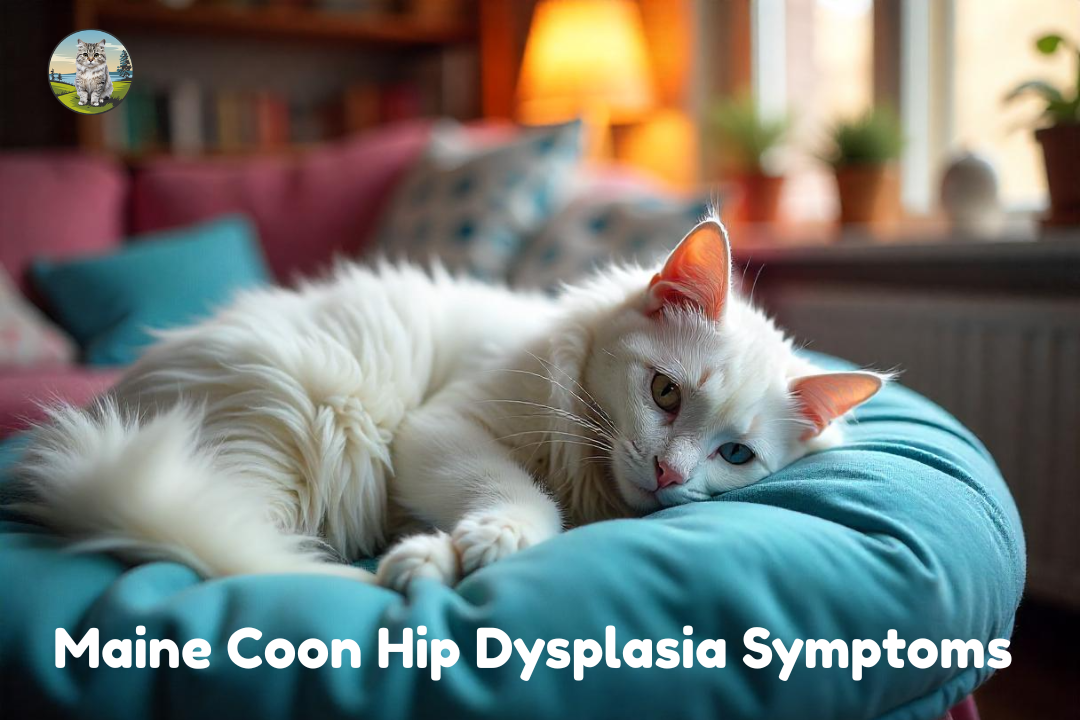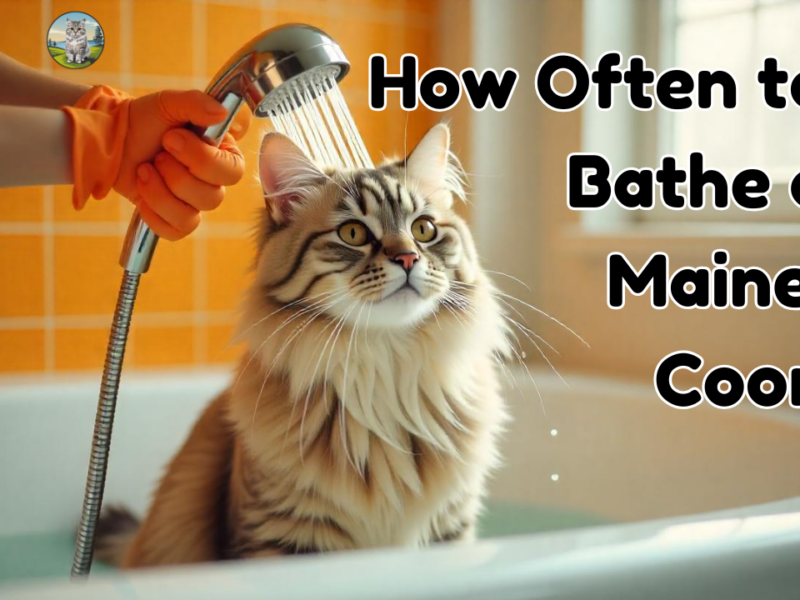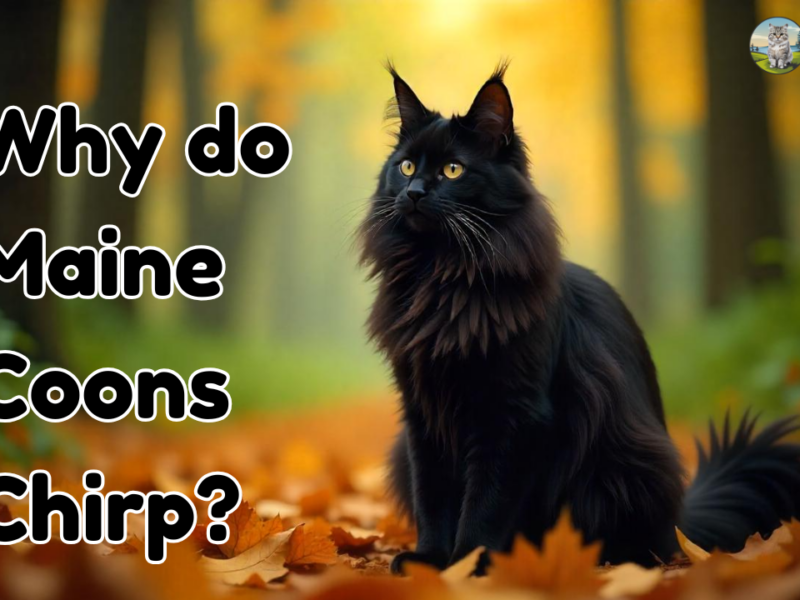Maine Coon cats are known for their big size, fluffy coats, and friendly personalities. They’re often called the “gentle giants” of the cat world. But because of their large size, they can be prone to certain health issues, one of which is hip dysplasia. This condition affects the hip joints and can cause pain and mobility problems. If you own a Maine Coon or are thinking about getting one, it’s important to know the signs of hip dysplasia in cats, what causes it, and how to help your cat live a comfortable life. In this article, we’ll cover everything you need to know about Maine Coon hip dysplasia symptoms, the causes, and some practical cattoptips to keep your furry friend happy and healthy.
What is Hip Dysplasia in Cats
Hip dysplasia is a condition where the hip joint doesn’t develop properly. In a healthy hip, the ball and socket fit together smoothly, allowing the leg to move easily. But in cats with hip dysplasia, the joint is loose or misshapen, which can lead to pain, stiffness, and arthritis over time.
While hip dysplasia is more common in dogs, larger cat breeds like Maine Coons are also at risk. This is because their size puts extra stress on their joints. If not managed properly, hip dysplasia can make it hard for your cat to move around and enjoy their daily activities.
Signs of Hip Dysplasia in Cats
Spotting the signs of hip dysplasia in cats early can make a big difference in managing the condition. Maine Coons are usually very active and love to climb, jump, and play. If you notice any changes in their behavior or movement, it could be a sign of hip problems. Here are some common Maine Coon hip dysplasia symptoms to watch for:
- Trouble Jumping or Climbing – Maine Coons love to explore high places, like shelves, cat trees, or windowsills. If your cat starts having trouble jumping or avoids climbing altogether, it could mean their hips are hurting.
- Limping or Favoring One Leg– If your cat is limping or seems to be putting less weight on one of their back legs, it could be a sign of hip dysplasia. You might also notice them shifting their weight to their front legs to take pressure off their hips.
- Less Activity or Playfulness– A cat with hip dysplasia might become less active. If your Maine Coon suddenly seems lazy or doesn’t want to play as much, it could be because their joints are sore.
- Stiffness or Trouble Standing Up– Cats with hip dysplasia often have stiff legs, especially after resting or sleeping. They might take longer to stand up or move around.
- Clicking or Grinding Sounds– In some cases, you might hear a clicking or grinding noise when your cat walks or moves. This happens because the joint isn’t working properly.
- Weak Back Legs
Over time, the muscles in your cat’s back legs might get weaker because they’re not using them as much. This can make it even harder for them to move around.
If you notice any of these symptoms, it’s important to take your cat to the vet for a checkup. Early diagnosis and treatment can help prevent the condition from getting worse.
What Causes Hip Dysplasia in Cats
Understanding what causes hip dysplasia in cats can help you take steps to prevent or manage the condition. While genetics play a big role, other factors can also contribute. Here are some common causes:
- Genetics– Hip dysplasia is often passed down from parents to kittens. If a cat’s parents had hip dysplasia, there’s a higher chance their kittens will have it too. Responsible breeders test their cats for this condition to reduce the risk.
- Fast Growth– Maine Coons grow very quickly, especially in their first year. This rapid growth can put stress on their joints, making them more likely to develop hip dysplasia.
- Being Overweight– Extra weight puts more pressure on the joints, which can make hip dysplasia worse. Keeping your cat at a healthy weight is one of the best ways to protect their joints.
- Poor Diet– A diet that doesn’t have the right nutrients can affect your cat’s joint health. Make sure your Maine Coon gets a balanced diet with plenty of vitamins and minerals.
- Injury or Trauma– An injury to the hip or pelvis can damage the joint and lead to hip dysplasia over time.
How to Help a Cat with Hip Dysplasia
While hip dysplasia can’t be cured, there are many ways to manage the condition and keep your cat comfortable. Here are some cattoptips to help your Maine Coon live their best life:
- Keep Your Cat at a Healthy Weight– A healthy weight is key to reducing stress on your cat’s joints. Talk to your vet about the right diet and portion sizes for your Maine Coon.
- Give Joint Supplements– Supplements like glucosamine and chondroitin can help support joint health and reduce inflammation. Always check with your vet before giving your cat any new supplements.
- Encourage Gentle Exercise– Low-impact activities, like playing with toys or short walks, can help keep your cat’s muscles strong and their joints flexible. Avoid activities that involve a lot of jumping or running.
- Make Your Home Comfortable– Provide soft bedding and easy access to their favorite spots. You can also use ramps or steps to help your cat reach high places without jumping.
- Regular Vet Visits– Take your cat to the vet for regular checkups. Your vet can monitor their condition and recommend treatments like pain medication or physical therapy.
- Consider Surgery– In severe cases, surgery might be needed to fix the joint and relieve pain. Your vet can help you decide if this is the right option for your cat.
Preventing Hip Dysplasia in Maine Coons
If you’re thinking about getting a Maine Coon, there are steps you can take to reduce the risk of hip dysplasia:
- Choose a Reputable Breeder: Make sure the breeder tests their cats for hip dysplasia and other genetic conditions.
- Feed a Balanced Diet: Give your cat high-quality food that supports healthy growth and joint health.
- Monitor Their Weight: Avoid overfeeding and keep your cat at a healthy weight.
- Encourage Gentle Play: Avoid activities that put too much strain on their joints, especially when they’re young.
Final Thoughts
Hip dysplasia can be a challenging condition for Maine Coon cats, but with the right care, your cat can still live a happy and active life. By knowing the signs of hip dysplasia in cats, understanding what causes hip dysplasia in cats, and following these cattoptips, you can help your Maine Coon stay comfortable and healthy.
If you think your cat might be showing Maine Coon hip dysplasia symptoms, don’t wait—talk to your vet right away. Early treatment can make a big difference in managing the condition and keeping your cat pain-free.
With love, attention, and proper care, your Maine Coon can continue to be the playful, affectionate companion you adore.


